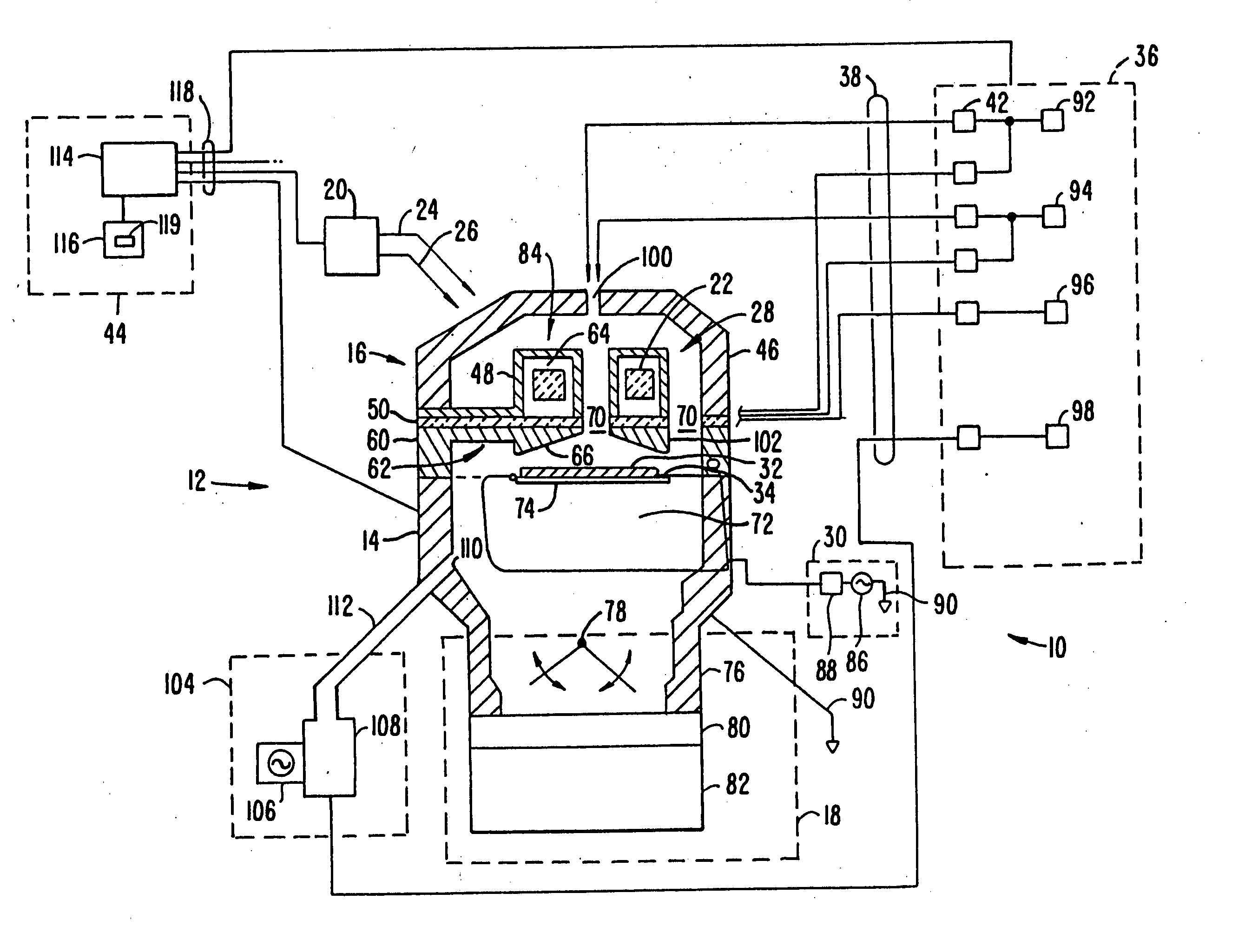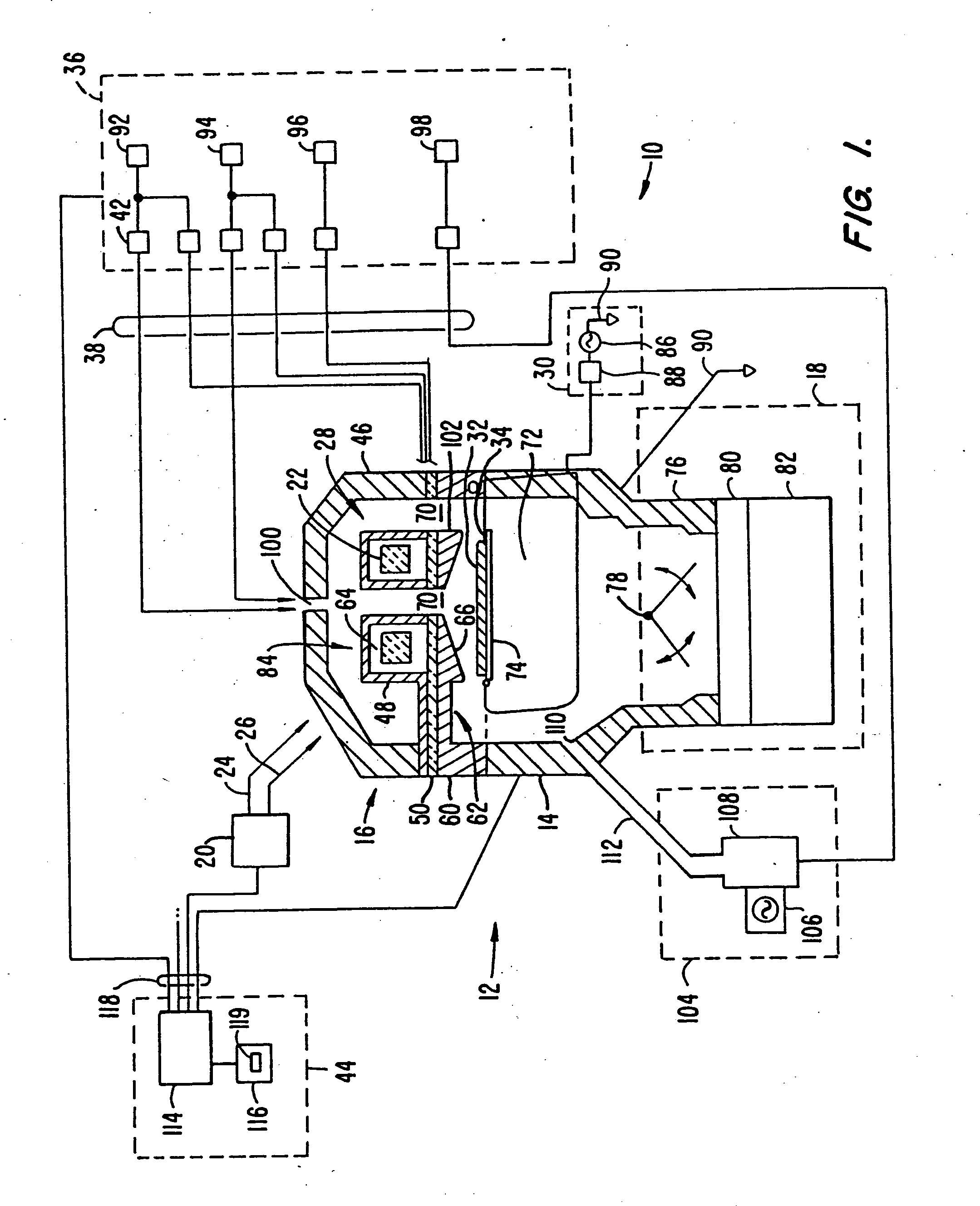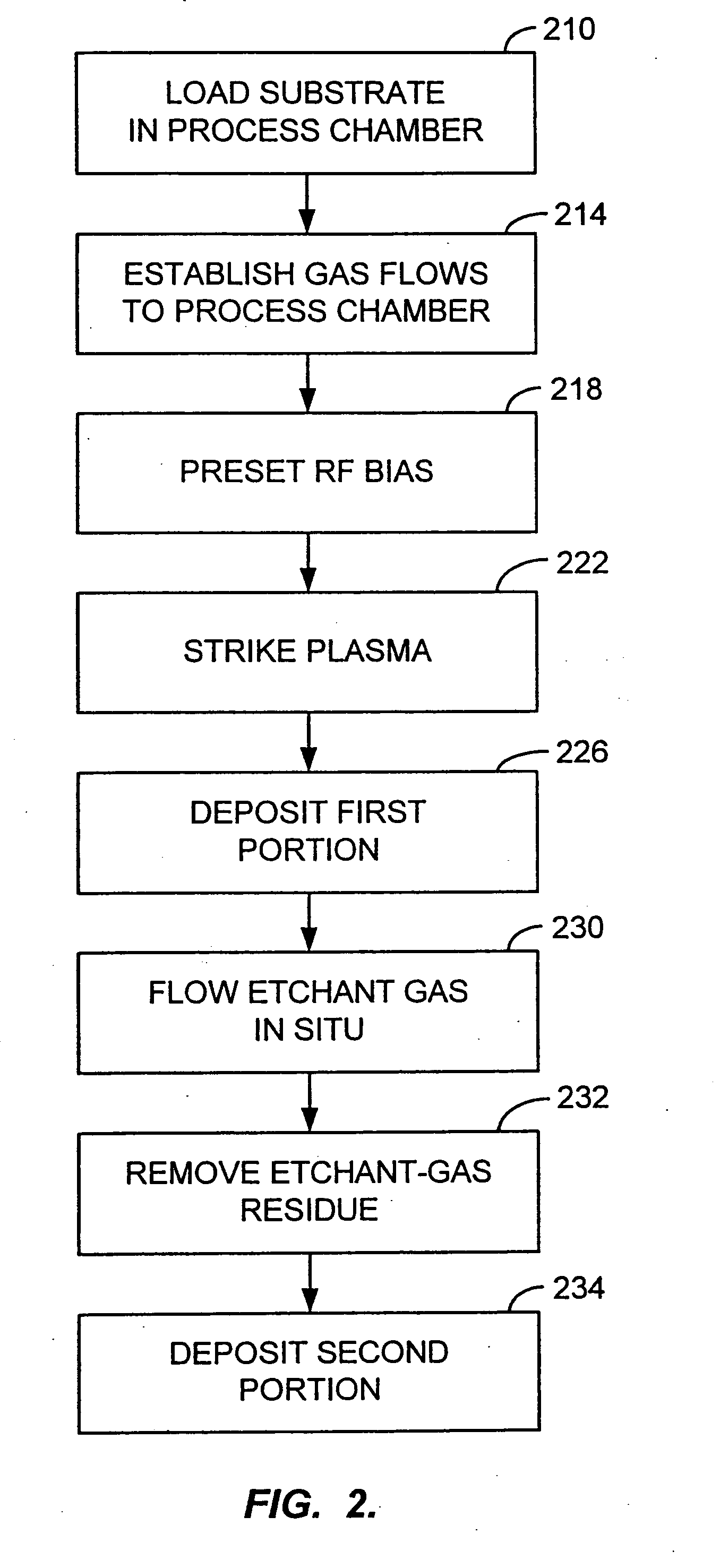In situ application of etch back for improved deposition into high-aspect-ratio features
a technology of high-aspect ratio and in situ application, which is applied in the direction of chemically reactive gases, crystal growth processes, coatings, etc., can solve the problems of inability to completely fill the vacuum chamber of the semiconductor manufacturer, adversely affect the operation of the device, and the limitations of the effectiveness of the plasma processing system in the process, so as to achieve the effect of improving the control level and easy control
- Summary
- Abstract
- Description
- Claims
- Application Information
AI Technical Summary
Benefits of technology
Problems solved by technology
Method used
Image
Examples
Embodiment Construction
1. Introduction
[0018] Embodiments of the invention use a continuous in situ plasma for all phases of a dep / etch / dep process. This is achieved with a chamber design that disposes the plasma source, which may be a toroidal plasma source, within the process chamber. Such a design and process have a number of advantages. For example, the chamber design is especially suitable for processes that use etchant gases because it does not include a capacitive coupling between the dome and plasma-generation coils. This allows in situ processing with etchants while avoiding undesirable surface erosion within the process chamber. This process is unlike previous dep / etch / dep processes, which were instead generally adapted for remote-plasma etch phases; attempts to adapt those processes to in situ etch phases resulted in the deficiencies described above.
[0019] In embodiments of the invention, the dep / etch / dep process is accordingly performed as a continuous process without the need for separate p...
PUM
| Property | Measurement | Unit |
|---|---|---|
| diameter | aaaaa | aaaaa |
| diameter | aaaaa | aaaaa |
| thick | aaaaa | aaaaa |
Abstract
Description
Claims
Application Information
 Login to View More
Login to View More - R&D
- Intellectual Property
- Life Sciences
- Materials
- Tech Scout
- Unparalleled Data Quality
- Higher Quality Content
- 60% Fewer Hallucinations
Browse by: Latest US Patents, China's latest patents, Technical Efficacy Thesaurus, Application Domain, Technology Topic, Popular Technical Reports.
© 2025 PatSnap. All rights reserved.Legal|Privacy policy|Modern Slavery Act Transparency Statement|Sitemap|About US| Contact US: help@patsnap.com



